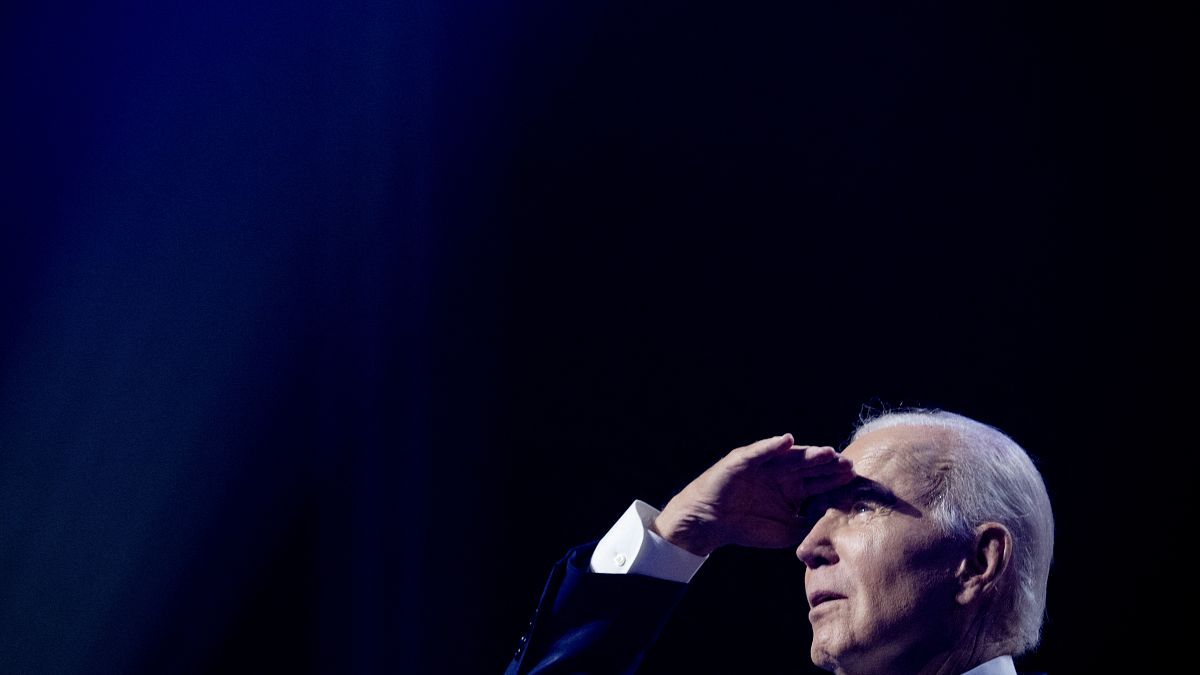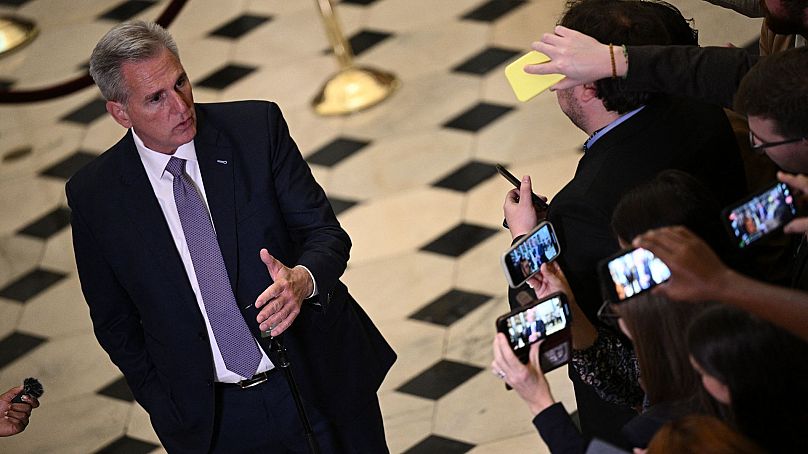Time is running out. If Congress does not reach an agreement before midnight on Saturday, the US government will shut down.
With 1 October looming, US Congress is soon about to run out of time to accept a short-term spending bill and avoid government grinding to a halt.
The shutdown would be the fourth in a decade and comes just four months after a similar standoff brought the federal government within days of defaulting on its more than $31 trillion (€29.27 trillion) debt.
The National Park Service will close with a few exceptions, the Securities and Exchange Commission will suspend most of its regulatory activities and hundreds of thousands of federal workers will be furloughed beginning at 12:01 a.m. ET on Sunday (0401 GMT) if US President Joe Biden does not sign into law a spending package before then.
Why is the US government heading towards a federal shutdown?
The reason why Washington is teetering on the brink is lawmakers - in both the House of Representatives and the Senate - cannot agree to pass legislation on federal government funding for the next year.
Kevin McCarthy, the House Speaker, is trying to push for a measure that hardline Republicans have been demanding for a while: steep federal spending cuts (about 8%), coupled with stronger border security measures.
Democrats refuse to vote for the package, and even some Republican lawmakers deem it too extreme.
On Thursday, the Senate voted 76-22 to debate a stopgap bill that would extend federal spending until 17 November, and authorise roughly $6 billion (€5.67 billion) for domestic disaster funding and aid to Ukraine.
On Friday, a handful of hardline House Republicans refused to support the stopgap spending bill, however.
House Speaker Kevin McCarthy said he would try to put the proposal on the floor “probably” on Friday.
The stopgap measure, also known as a continuing resolution (CR), would give enough time for US lawmakers to vote on the 12 spending bills that sum up the rules of spending some $6 trillion (€5.67 trillion) in the next fiscal year.
Another crucial disagreement surrounds US funding for Kyiv's war effort against Russia.
Many Republicans have vocally criticised supporting Ukraine, arguing the money would be better spent on American taxpayers.
Their stance could spell trouble ahead for future Ukraine support when a federal budget is ultimately and necessarily adopted.
A few months ago, McCarthy and President Joe Biden reached a bipartisan deal that narrowly avoided a budgetary crisis similar to the one that seems to be imminent.
The agreement included $1.59 trillion (€1.5 trillion) in discretionary spending in fiscal 2024.
House Republicans are demanding another $120 billion (€113.3 billion) in cuts, plus tougher legislation that would stop the flow of immigrants at the U.S. southern border with Mexico.
Former President Donald Trump has urged Republicans to stand their ground, or “shut it down”.
But the former US president has not been a better guard of the finances either. The US government has overspent in the last two decades without exception.
The country's debt has more than doubled in the past 30 years, currently accounting for more than 120% of the country’s GDP, according to the International Monetary Fund (IMF).
As a comparison, the average government debt in the European Union is 84%.
Broken down to each US citizen, the overall debt amounts to almost $100,000 (€95,000).
Given the average salary, Americans would need to work for about a year and a half for free to reimburse the government’s debt - which would likely increase in the meantime.
Who will be impacted by the looming shutdown?
Owing to the past, the federal government has its own shutdown plans which they dust off each time the country is on the brink.
Although it’s the role of Congress to fund the government, lawmakers do not stop being paid when they fail to deliver.
On the other hand, the remaining four million federal employees face uncertainty, including the military.
Their pay will be suspended, and some of them will be furloughed for the duration of the shutdown. Others, who are deemed essential will still have to report to work, such as police officers.
None will be paid during the impasse.
For many, it could potentially dry out their finances just like what happened during the record 35-day funding lapse in 2018-2019.
No paychecks mean missed mortgage payments, credit card debts and reduced consumption in the economy.
A shutdown could threaten crucial federal programs such as loans to small businesses, help for low-income tenants, child nutrition and student aid programmes.
Travellers may also be impacted by the shutdown, with air travel disruptions to expect, and national parks closed.
The last shutdown cost billions to the overall US economy. The Congressional Budget Office (CBO) estimated that the 35-day partial government shutdown in 2018-2019 reduced economic output by $11 billion (€9.5 billion) in the six months that followed.




